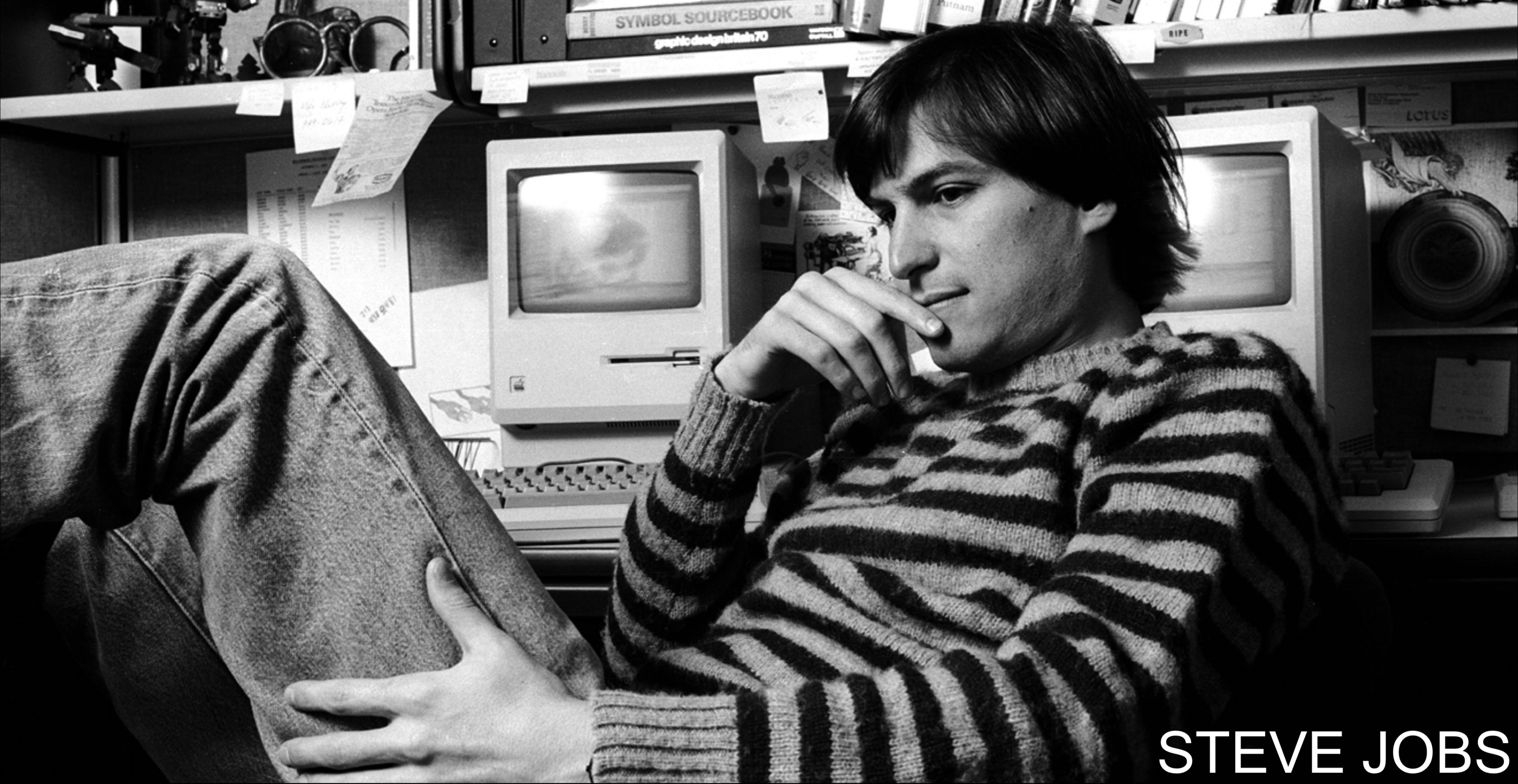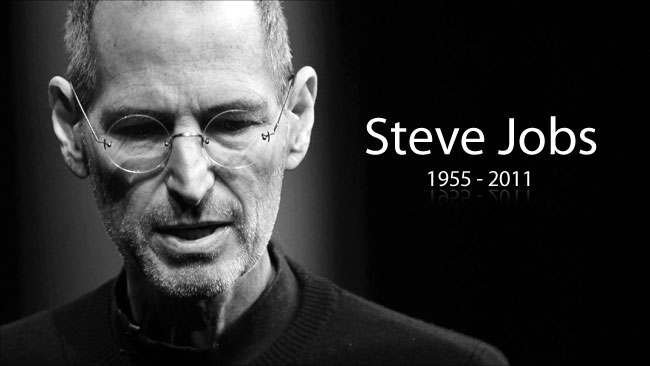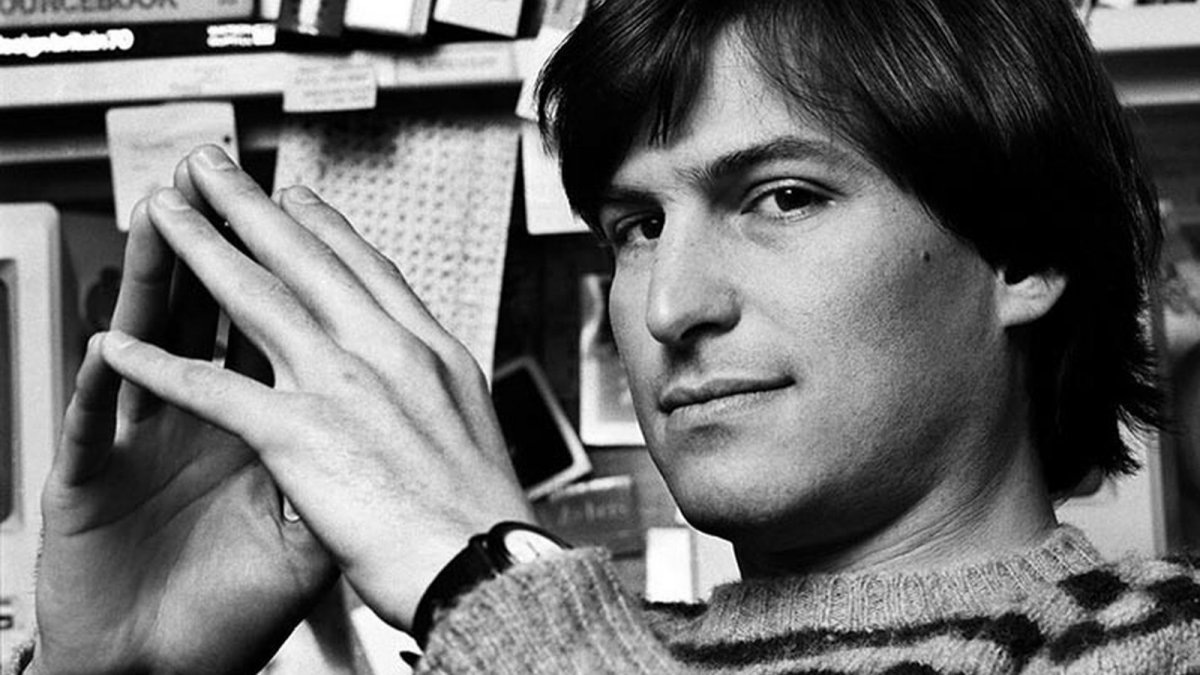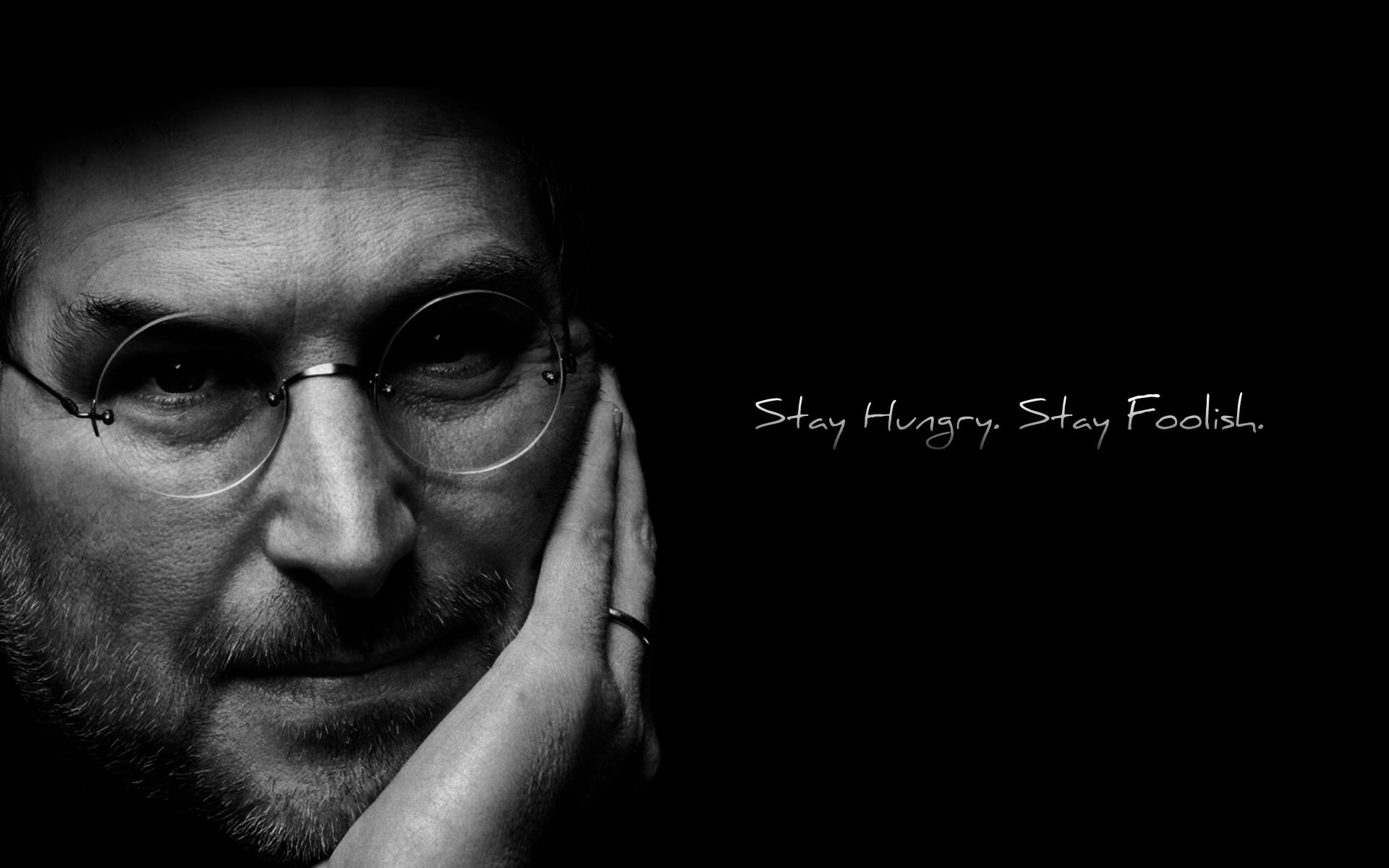

Steven Paul Jobs (February 24, 1955 – October 5, 2011) was an American entrepreneur, industrial designer,
business magnate, media proprietor, and investor. He was the co-founder, chairman, and CEO of Apple; the
chairman and majority shareholder of Pixar; a member of The Walt Disney Company's board of directors
following its acquisition of Pixar; and the founder, chairman, and CEO of NeXT. He is widely recognized as
a pioneer of the personal computer revolution of the 1970s and 1980s, along with his early business partner
and fellow Apple co-founder Steve Wozniak.
Jobs was born in San Francisco to a Syrian father and German-American mother. He was adopted shortly after
his birth. Jobs attended Reed College in 1972 before withdrawing that same year. In 1974, he traveled through
India seeking enlightenment before later studying Zen Buddhism. He and Wozniak co-founded Apple in 1976 to
sell Wozniak's Apple I personal computer. Together the duo gained fame and wealth a year later with production
and sale of the Apple II, one of the first highly successful mass-produced microcomputers. Jobs saw the
commercial potential of the Xerox Alto in 1979, which was mouse-driven and had a graphical user interface
(GUI). This led to the development of the unsuccessful Apple Lisa in 1983, followed by the breakthrough
Macintosh in 1984, the first mass-produced computer with a GUI. The Macintosh introduced the desktop
publishing industry in 1985 with the addition of the Apple LaserWriter, the first laser printer to feature vector
graphics.

Jobs's design aesthetic was influenced by philosophies of Zen and Buddhism. In India, he experienced Buddhism
while on his seven-month spiritual journey, and his sense of intuition was influenced by the spiritual people with
whom he studied. He also learned from many references and sources, such as modernist architectural style of Joseph
Eichler, and the industrial designs of Richard Sapper and Dieter Rams. According to Apple co-founder Steve
Wozniak, "Steve didn't ever code. He wasn't an engineer and he didn't do any original design..." Daniel Kottke, one
of Apple's earliest employees and a college friend of Jobs, stated: "Between Woz and Jobs, Woz was the innovator,
the inventor. Steve Jobs was the marketing person."
He is listed as either primary inventor or co-inventor in 346 United States patents or patent applications related to a
range of technologies from actual computer and portable devices to user interfaces (including touch-based), speakers,
keyboards, power adapters, staircases, clasps, sleeves, lanyards, and packages. His contributions to most of his patents
were to "the look and feel of the product". He and his industrial design chief Jonathan Ive are named for 200 of the
patents. Most of these are design patents as opposed to utility patents or inventions; they are specific product designs
such as both original and lamp-style iMacs, and PowerBook G4 Titanium. He holds 43 issued US patents on
inventions. The patent on the Mac OS X Dock user interface with "magnification" feature was issued the day before
he died. Although Jobs had little involvement in the engineering and technical side of the original Apple computers,
Jobs later used his CEO position to directly involve himself with product design.

We have an environment where excellence is really expected. What's really great is to be open when [the work] is
not great. My best contribution is not settling for anything but really good stuff, in all the details. That's my job --
to make sure everything is great.
-- from Steve Jobs, 1955 - 2011, Steven Levy, Wired, 5 Oct 2011
When people look at an iMac, they think the design is really great, but most people don't understand it's not skin
deep,' he said. 'There's a reason why, after two years, people haven't been able to copy the iMac. It's not just
surface. The reason the iMac doesn't have a fan is engineering. It took a ton of engineering and that's true for the
Cube and everything else.
-- from Steve Jobs, 1955 - 2011, Steven Levy, Wired, 5 Oct 2011
(on the iPod) If there was ever a product that catalyzed what's Apple's reason for being, it's this. Because it
combines Apple's incredible technology base with Apple's legendary ease of use with Apple's awesome design...
it's like, this is what we do. So if anybody was ever wondering why is Apple on the earth, I would hold this up as
a good example.
-- from Steve Jobs, 1955 - 2011, Steven Levy, Wired, 5 Oct 2011
Very touching homage from Apple honoring Steve Jobs’ memory on the 10-year anniversary of his passing today.
I have very little to add – I’m still sad he is no longer with us.
Here’s the video reposted on YouTube for posterity, as well as the letter from Laurene & the kids:
For a decade now, mourning and healing have gone together.
Our gratitude has become as great as our loss.
Each of us has found his or her own path to consolation,but we have come together in a beautiful place of love for Steve, and for what he taught us.
For all of Steve’s gifts, it was his power as a teacher that has endured.
He taught us to be open to the beauty of the world, to be curious around new ideas, to see around the next corner, and most of all to stay humble in our own beginner’s mind.
There are many things we still see through his eyes, but he also taught to look for ourselves. He gave us equipment for living,and it has served us well.
One of our greatest sources of consolation has been our association of Steve with beauty. The sight of something beautiful — a wooded hillside, a well‑made object — recalls his spirit to us. Even in his years of suffering, he never lost his faith in the beauty of existence.
Memory is inadequate for what is in our hearts: we miss him profoundly.
We were blessed to have him as husband and father.